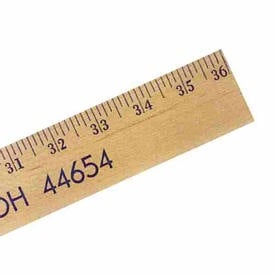I had an escrow close last week, but we were barely able to keep the deal together. I alluded to this deal in my earlier posting about Real HIgh Stakes Poker a few weeks ago. It may not surprise you to read that a deal which was hard to put together was hard to keep together, but listen to this…
We were well on our way to closing. The seller had actually already signed the documents she needed to, all that was left for the buyers to go to their friendly neighborhood First American Title Company office and do their signatures, and then we’d just sit around and wait for those fat commission checks to come rolling in. Then, late one evening, my phone rings. It’s the buyer’s agent. It seems we had a problem.
“A new material fact has just come to light,” she began. “It significantly affects the value of the property.” Now, the buyers had already released their physical contingencies. They had already signed off on the property, saying that after having had ten days to investigate it, everything was kosher. But now, on the eve of the day when they sign their loan and title documents, a new material fact had apparently come to light. Wouldn’t you know it.
“Oh?” I asked, “What’s that?” The agent replied, “Well, in the MLS, you listed the property as 1690 square feet. When the appraiser measured it, he came up with only 1505 square feet.” It seems that the buyers had gone ballistic, had threatened to file a lawsuit, to sue us for misrepresentation or fraud or something…but that the buyer’s agent had calmed them down to the point where all they wanted was a discount of $15,000.

Well, that’s a bummer. The truth is, I had no idea how many square feet the house is. I had read several different figures from a variety of different sources, and come up with 1690. It “felt” like about 1690 to me, too. Also, the carpet guys and the hardwood floor guys, guys who measure houses all day long, none of them ever said anything to me like, “Hey, you really think this house is 1690 square feet? It feels smaller than that to me.”
However, right in the agent’s private comments on the MLS, it said quite clearly: “SF Approx.” Not only that, but the buyers had submitted a Buyer’s Inspection Advisory along with their offer, a signed document which reads, in part:
YOU ARE ADVISED TO CONDUCT INVESTIGATIONS OF THE ENTIRE PROPERTY, INCLUDING, BUT NOT LIMITED TO THE FOLLOWING:
…
2. SQUARE FOOTAGE, AGE, BOUNDARIES: Square footage, room dimensions, lot size, age of improvements and boundaries. Any numerical statements regarding these items are APPROXIMATIONS ONLY and have not been verified by Seller and cannot be verified by Brokers.
You see, the seller really isn’t on the hook to provide a precisely accurate measurement of anything. And, what’s more, if you take three different appraisers and have each measure the house, each one would probably come up with a slightly different figure.
Now, this measurement of 1505 square feet came from the appraisal. The buyer (or his agent, or lender) orders the appraisal, and the buyer pays for it. The buyer is entitled to see it, it is his property. The buyer has a specific contingency on the contract called the appraisal contingency – if there’s anything in the appraisal that does not satisfy the buyer, the buyer can back out of the contract. However, the buyer had specifically released his appraisal contingency as well. Why, if this square footage was so important to the buyer, did he not bother to read his appraisal which he paid for, before releasing the contingency?
And perhaps the biggest weakness in the buyer’s ploy to get a $15,000 discount was that even at 1505 square feet, the home had appraised for at least the purchase price. So how, then, is a $15,000 price deduction justified?
The answer is that it’s not justified. To my eyes, this was a last-minute ploy to chisel some more cash out of the seller. Not such a bad ploy, really, but a bit unfortunate. It would have been more effective to use this before releasing the physical and appraisal contingencies, because as I said, the seller had already signed off and was thinking that it was basically a done deal. Pulling something like this at the last minute kind of left a sour taste in everyone’s mouth.
The buyers had sent over an addendum, asking for the $15,000. After consulting with my client, I informed the buyer’s agent that it wasn’t going to happen, no way would my client be signing that addendum, and that she needed to talk some sense into her client.
Alas, the word came back from the buyer the next morning, in the form of a cancellation of contract form. I shipped that off to my client the seller, and in a few hours I had it back, and forwarded it on to the buyer’s agent, saying, “OK, here’s the cancellation of contract. I’m going to let you send it in to the escrow company, if that’s really what your client wants to do.”
Heh. I had a feeling that’s not what the buyer really wanted to do. I think the buyer really wanted to buy the house (it was a good house, good location, good price). And, sure ’nuff, a few hours later I got a phone call from the buyer’s agent. “Seb, we’re gonna hold off on sending that cancellation to escrow. I’ll let you know later on in the day.”
Well, a whole lot more drama ensued, which I won’t go in to. In the end, the buyer’s agent chipped in $2,500 of her commission, and we had to chip in $2,500 of our commission – except that our client, bless her heart, signed a separate agreement and wrote my brokerage a check after the close of escrow, giving us the $2,500 back.
What a crazy business. Ya win some, ya lose some. After all the hard glares across the poker table I’m glad we won this one.





